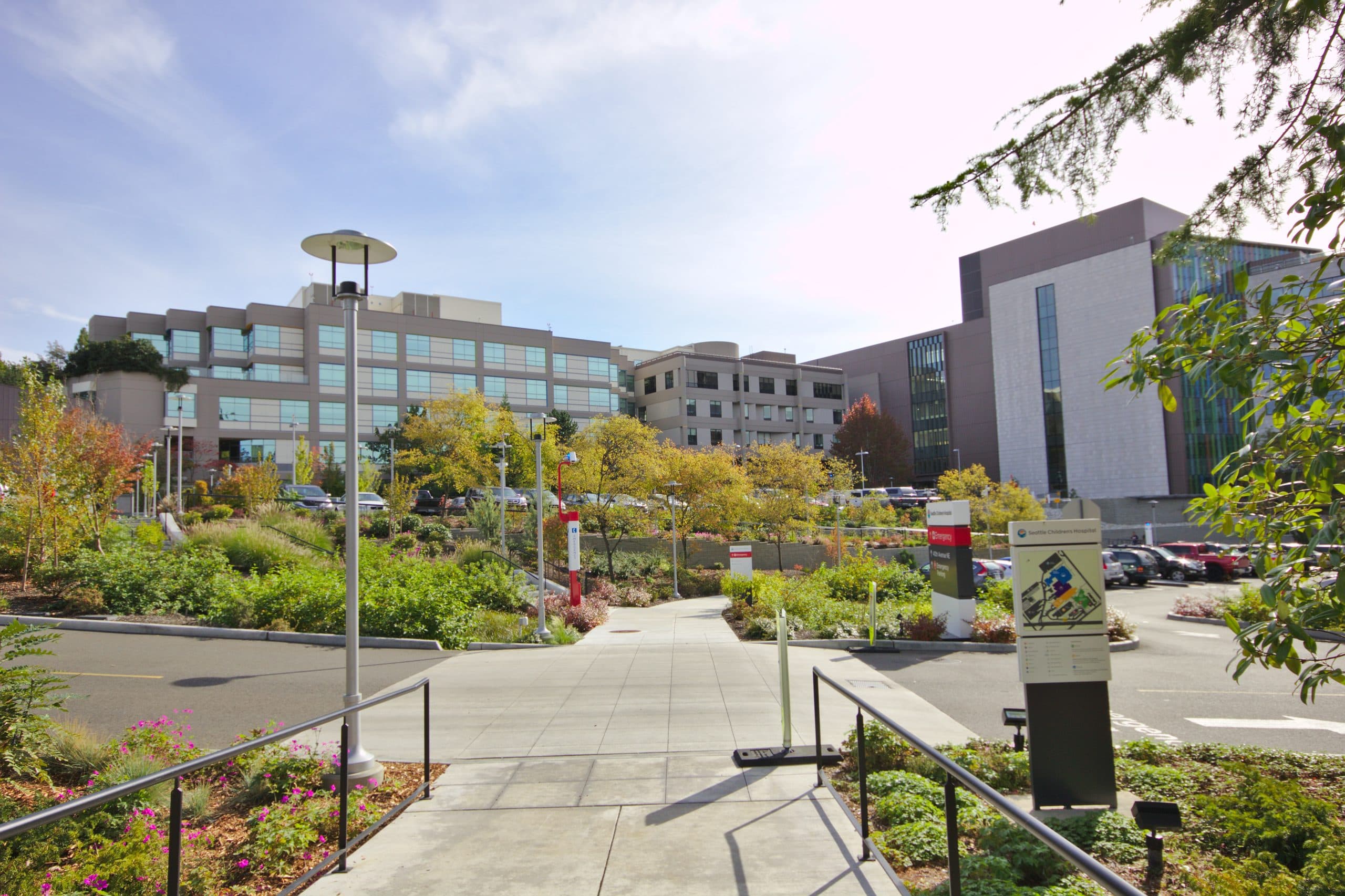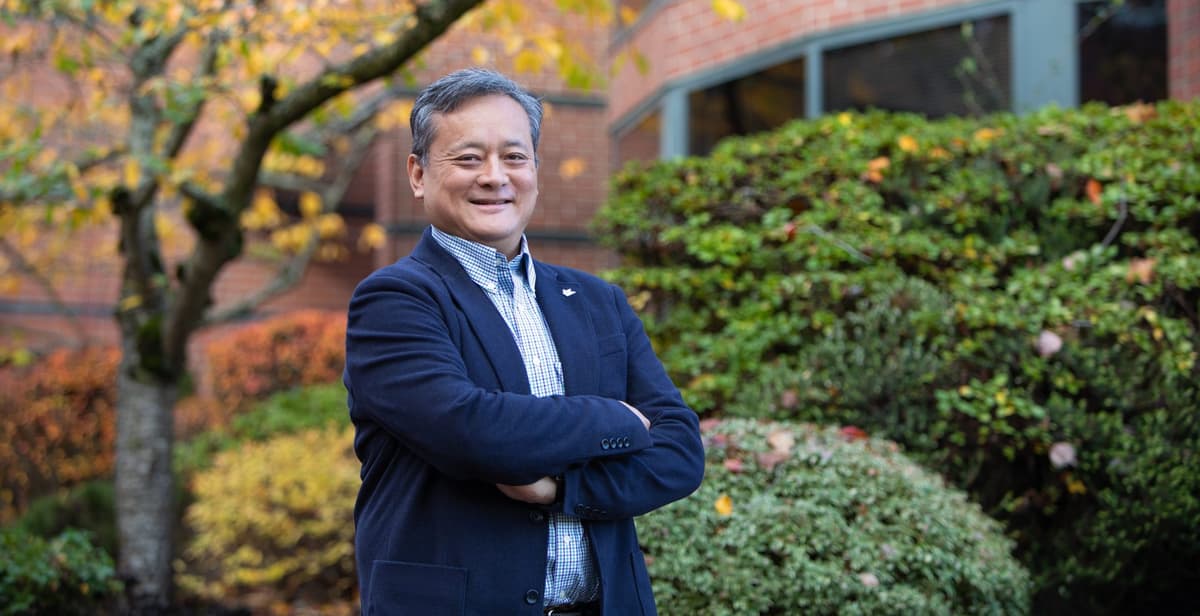 When Paige Johnson ’15 first started exploring job opportunities for hospital dietitians, she was amazed by the demand for different dietetic specialties and services. Hospitals need registered dietitians in intensive care units (ICU) and in neonatal intensive care units (NICU) for infants.
When Paige Johnson ’15 first started exploring job opportunities for hospital dietitians, she was amazed by the demand for different dietetic specialties and services. Hospitals need registered dietitians in intensive care units (ICU) and in neonatal intensive care units (NICU) for infants.
Dietitians might work with doctors, nurses, and physical therapists to help patients experiencing diabetes or hypertension. They might oversee the hospital’s kitchens and dining rooms or create specific menus for patients.
Johnson started her career at Seattle Children’s Hospital after graduating from SPU with a bachelor’s degree in nutrition and food science, with an emphasis in dietetics. For the first few years, she worked in the hospital’s milk lab, mixing formulas or fortifying a mother’s breastmilk for premature infants or those with other specific dietary needs.
 If an infant experienced surgery complications, such as damaged lymphatic vessels that allowed chyle to leak into nearby organs, Johnson would centrifuge breastmilk and skim off the fat layers to provide these babies with super low-fat breastmilk to ensure proper nutrition and healing.
If an infant experienced surgery complications, such as damaged lymphatic vessels that allowed chyle to leak into nearby organs, Johnson would centrifuge breastmilk and skim off the fat layers to provide these babies with super low-fat breastmilk to ensure proper nutrition and healing.
After she completed a dietetic internship with SPU and earned her credentials, Johnson stepped into a pediatric oncology dietitian position at Children’s.
“I worked with a lot of leukemia patients — acute myeloid leukemia or acute lymphoblastic leukemia. We called these ‘liquid tumors,’” Johnson said, of the blood cancers that affect the bone marrow, blood cells, and the lymphatic system. “We also saw patients with solid cancer tumors, so neuroblastomas or bone tumors. Their chemotherapy treatment was so aggressive. A lot of them were very sick with horrible nausea and vomiting and no appetite.”
Johnson worked on specific diets for patients and how they would receive needed nutrients. Most of these patients — 85% to 90% — needed an NG tube, a flexible plastic tube inserted through the nose to the stomach to deliver medicine and nutrients to them, otherwise, they would lose too much weight and be too weak for their treatments. Still, it’s common for parents and young patients to resist an NG tube. “It was a challenging conversation to have with patients and families. I had to keep reminding them that it was a short-term solution to help them stay strong and get through their treatment.”
“I had a 14-year-old AML [acute myeloid leukemia] patient who was the most resistant I’ve ever seen to an NG tube. It would start to go in, and then she’d freak out and refuse it. We attempted it three times,” Johnson remembered.
Johnson talked to the 14-year-old girl and her parents about the necessity of the tube for her nutrition. “She ended up loving it in the end because it took the pressure off eating for her. I’ve used that girl as an example to every nervous patient since then. I tell them, ‘Yeah, it’s scary, but it’s just a really helpful tool you’re using to get through your treatment.’”
After four and a half years working at Seattle Children’s, Johnson recently accepted a new clinical dietitian position at Harborview Medical Center. The job prospects for dietitians are bright, with the U.S. Bureau of Labor Statistics predicting the number of jobs for dietitians will increase by 7% by 2032. And Johnson says SPU’s program prepared her well for the job.
“I took all the science courses — chemistry, microbiology, and anatomy — and then you take nutrition-focused courses,” Johnson said. “In the final two years, you are cooking a lot and doing meal planning. You learn a lot about food science. You learn how to apply medical nutrition therapy (MNT) for various medical conditions. You’re familiar in a kitchen. You learn about community nutrition and the various assistance programs offered to the public.”
“I remember one project where you had a food stamp allotment, and you had to figure out how to eat on a SNAP diet,” Johnson said. “I feel like SPU’s undergrad program prepared you well. They taught real-world application stuff that was applicable and relevant to all areas of nutrition.”

What is the path to becoming a registered dietician?
Step 1. Earn an accredited bachelor’s and master’s degree.
Starting on Jan. 1, 2024, students interested in becoming a registered dietician must earn a minimum of a master’s degree to be eligible to take the credentialing exam to become a registered dietitian nutritionist (RDN).
Step 2. Complete a dietitian internship.
In most cases, students must complete a master’s degree to apply online for an 8- to 24-month dietetic internship through the dietetic internship centralized application services (DICAS).
SPU offers a unique nutrition and dietetics internship that allows students to do a dietetic internship while they are concurrently working toward a master’s degree. This internship, approved by ACEND, can reduce the time it takes to become a registered dietician.
Step 3. Pass the Commission on Dietetic Registration (CDR) exam.
Once you fulfill the above eligibility requirements, students take the CDR exam which is comprised of 145 questions on the principles of dietetics, nutrition care for individuals and groups, management of food and nutrition programs and services, and food service systems. Students are given two and a half hours to complete the exam in various testing locations.
Step 4. Obtain a state license.
The CDR provides information on each state’s requirements to practice so check with the state where you wish to live and practice on specific licensing requirements.




